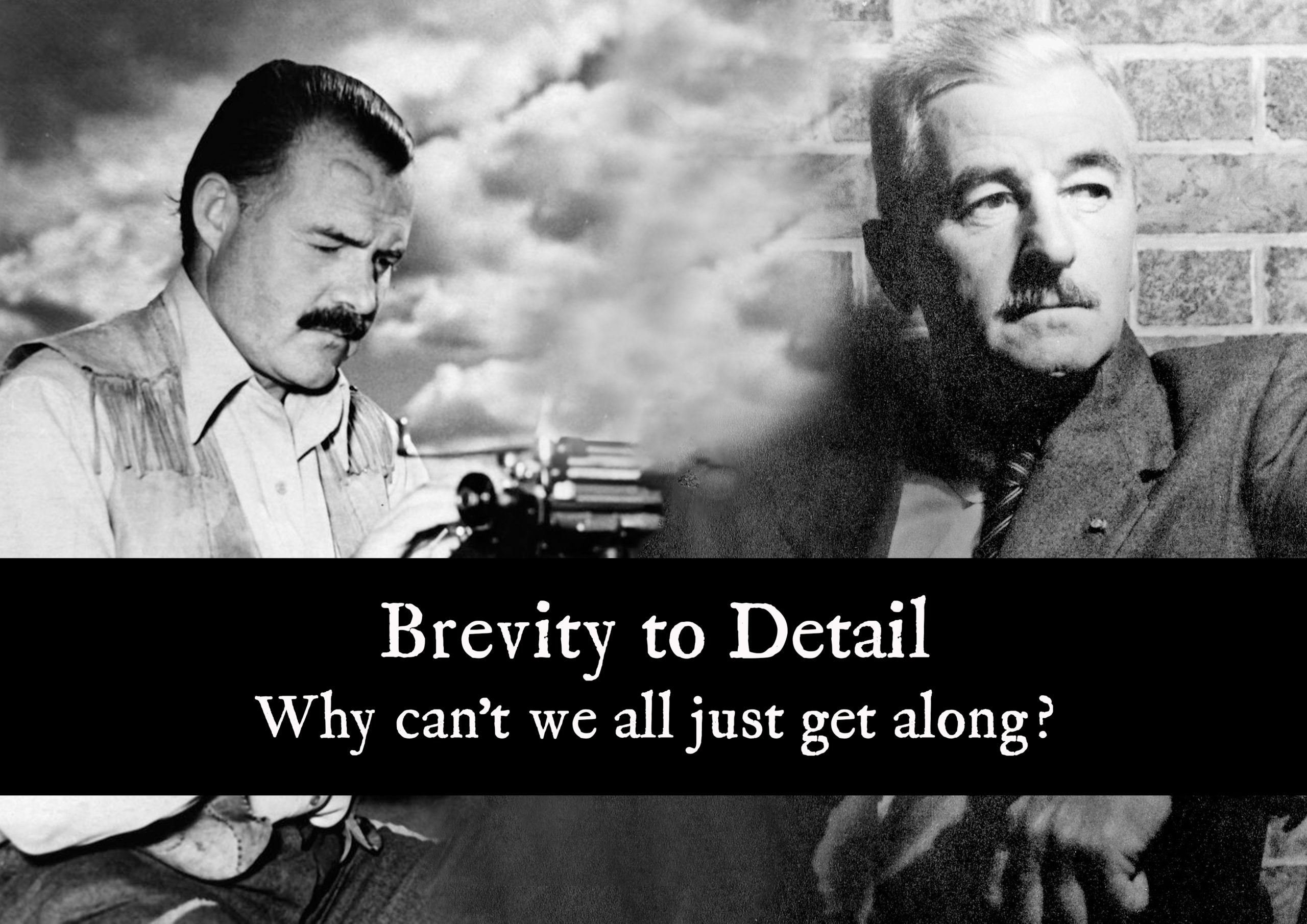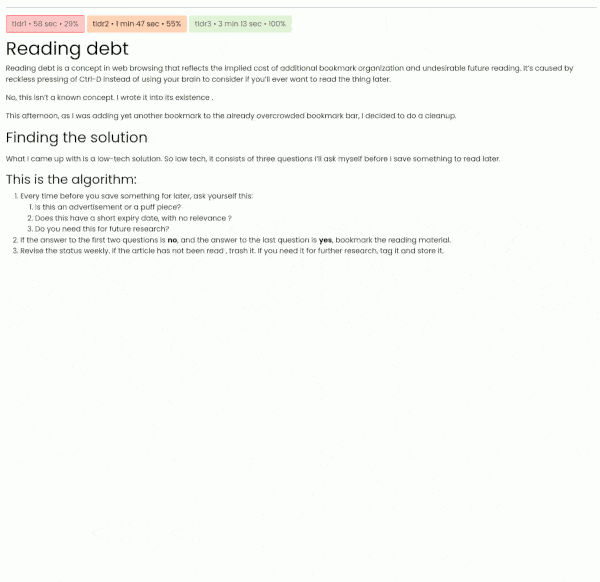Winning over the TL;DR crowd
Bombarded with an endless stream of content to consume, the majority often skips longer publications.
Often, the reason won’t be because of the contents, but because of the knee-jerk reaction to the longer blocks of text. Conversely, there’s a group that doesn’t care for stripped-down versions of everything they read. They want the details, the back story – the whole nine yards.
Can we appeal to both groups? I have an idea that we could apply to digital content. It’s something that’s been on my mind for some time now.

It doesn’t use AI, machine learning, or [insert any buzzword here]. The software part is some Javascript code that will enable you to present your writing in different forms. All the work is on you, figuring out how to structure the content to fit this form.
Every concept worth anything should have a name, so I call mine – TooLooDR (I love saying too-loo out loud).
TooLooDR explained in 3 sentences
TooLooDR is a writing and reading concept that aims to present one article in several forms and lengths by separating the content into multiple levels of detail.
Its structure guides the author to think in terms of complexity, lengthiness, and targeted audience for each level they create.
The goal of TooLooDR is to offer brevity for those who are in a hurry, but also provide more detail on demand for those who want more.
Before going any further, let me show you what a TooLooDR article looks like. An example is worth a thousand words (says he unironically, knowing it will probably sound stupid in this context).
Example of a TooLooDR article
Note: The content of the example article is irrelevant. I just needed something as an example, so I took the previous blog post I wrote. Keep in mind that I didn’t change the text. I wanted to prove that we can apply this concept even to the text that wasn’t written with it in mind (let’s call that kind of text – TooLooDR non-friendly text).Clicking on GIF will open a new tab with the fully functional demo.
What’s going on here?
I will try to explain how I envision each TooLooDR level.
I’m mentioning things like “flow” and “artistic style” below, and I know that may sound like I’m some pompous, deluded guy that thinks he knows how to write. I don’t. It’s how I envision someone that actually can write using TooLooDR.
Also, If you read this part, and go back to check the demo article, you can see that the example article and my idea of the perfect TooLooDR article differ. Again, I’m just a poor developer dude that blogs occasionally.
Level 1 (tldr1)
This level should contain the bare-bones, stripped-down version of the article. Think of it as a modern equivalent of telegram-style writing. Don’t think about the flow and don’t think about the artistic quality of this part. It can be ugly (well, it would be better if it’s not) if you can’t help it. The only purpose of this level is to send your message across – loud and clear!
This should get the attention of the “tl;dr” sayers, denying them the pleasure to reply with that same “tl;dr” in your comments.
Depending on the length of the entire article, this level should contain approximately 15 to 25 percent of the whole TooLooDR article.
Level 2 (tldr2)
This is the golden middle. It expands the dry and lifeless sentences of the previous level to a richer form, adding adjectives and adverbs. It also adds additional information to back up the claims made at the level below.
This is where you should make sure that your article has a certain flow to it. Make it pretty and make it engaging. This is actually what an entire non-TooLooDR article should look like.
Depending on the length of the entire article, this level (which means tldr1 + tldr2) should make up approximately 45 to 60 percent of the whole TooLooDR article.
Level 3 (tldr3)
Level 3 is your all-you-can-eat buffet of detail. This level is for those invested in the topic. It’s intended to display background information, low-level detail, everything that you as an author wanted to put in your article, but thought it would be too much.
You can go nuts here, really. Of course, you don’t want to write gibberish that has nothing to do with the rest of the article.
What’s wrong with the abstract?
You could say that the solution to this problem is the standard abstract you can see used in most of the publications.
There is nothing wrong with having an abstract. Heck, you can even write one before your TooLooDR article. I think they serve a different purpose.
The principal goal of this concept I’m writing about is making your content progressive. Empowering you to craft your content in a way where levels are intertwined and their subtraction or addition provokes interest from your readers.
Conclusion
It takes time to write something engaging, and it takes even more time having to think about the different forms in which people can consume the content you write.
The question is – is it worth it?
I need to write several articles using this concept to test exactly how much more time it takes me to do so following the TooLooDR concept.
I believe it won’t make much of a difference for me, because I already change each sentence I write multiple times before hitting that “publish button”.
Just like I stated at the beginning of this post that there are different types of people when it comes to reading, there are probably even more different types of people when it comes to writing.
Like always, your mileage may vary.
UPDATE:

I started writing this blog post about 2 weeks ago. Then I wrote some Javascript for the concept. I wanted to experiment with it, have some fun. Then it became a WordPress plugin.
At that point, I created a landing page for the thing. Then I thought that some documentation would also be nice for others if they want to use it.
Check it out here: https://tooloodr.com

